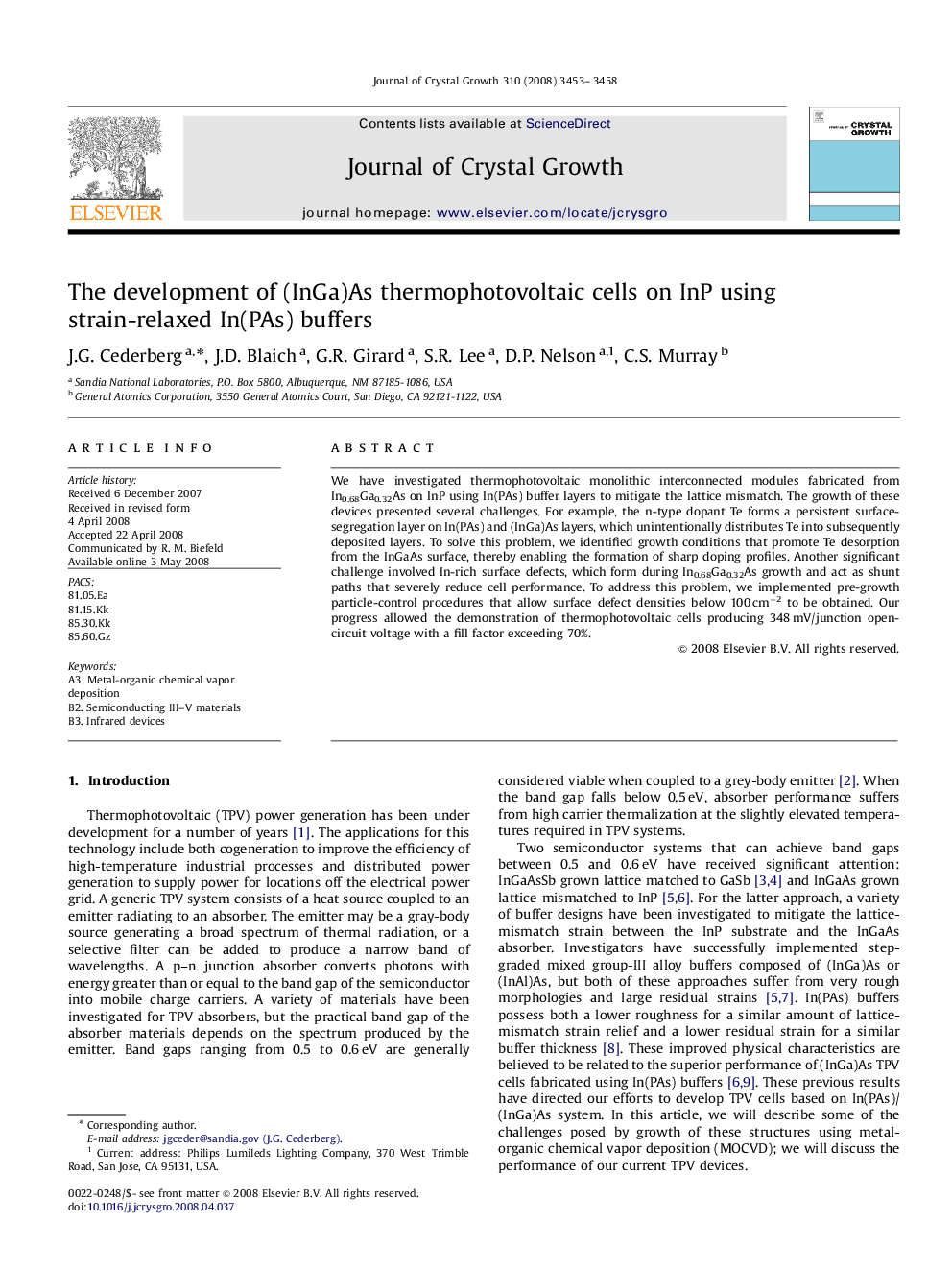| Article ID | Journal | Published Year | Pages | File Type |
|---|---|---|---|---|
| 1794319 | Journal of Crystal Growth | 2008 | 6 Pages |
Abstract
We have investigated thermophotovoltaic monolithic interconnected modules fabricated from In0.68Ga0.32As on InP using In(PAs) buffer layers to mitigate the lattice mismatch. The growth of these devices presented several challenges. For example, the n-type dopant Te forms a persistent surface-segregation layer on In(PAs) and (InGa)As layers, which unintentionally distributes Te into subsequently deposited layers. To solve this problem, we identified growth conditions that promote Te desorption from the InGaAs surface, thereby enabling the formation of sharp doping profiles. Another significant challenge involved In-rich surface defects, which form during In0.68Ga0.32As growth and act as shunt paths that severely reduce cell performance. To address this problem, we implemented pre-growth particle-control procedures that allow surface defect densities below 100Â cmâ2 to be obtained. Our progress allowed the demonstration of thermophotovoltaic cells producing 348Â mV/junction open-circuit voltage with a fill factor exceeding 70%.
Keywords
Related Topics
Physical Sciences and Engineering
Physics and Astronomy
Condensed Matter Physics
Authors
J.G. Cederberg, J.D. Blaich, G.R. Girard, S.R. Lee, D.P. Nelson, C.S. Murray,
